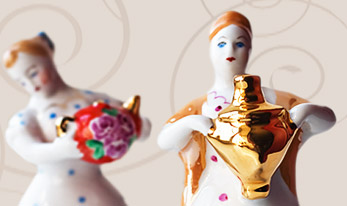Authentic Russian Recipes, Cuisine and Cooking |
 |
||||||
|
|||||||
Authentic Russian Recipes, Cuisine and Cooking |
 |
||||||
|
|||||||
Moscow Kremlin historyMoscow Kremlin is Russia's mythic refuge, a self contained city with a multitude of palaces, armories, and churches, a medieval fortress that links the modern nation to its legendary past in the ancient state of Kievan Rus'.
Within a century, the town had risen to become an independent principality within the Mongol empire. By the middle of the 14th century, its princes had gained such pre-eminence that Moscow was made the seat of the Russian Orthodox Church. With Ivan the Great (1462-1505) at its helm, Muscovite rule extended over all of Russia, and the Kremlin became more magnificent, befitting its role as the seat of Russian power. By 1480 the once modest hunting lodge had become an imposing fortress city. Its stone walls were graced by the magnificent Cathedral of the Assumption, where Ivan defiantly tore up the charter binding Moscow to Mongol rule. Over the next two centuries, until Peter the Great transferred the capital of Russia to St. Petersburg, the Kremlin served as the central stage for the magnificent and occasionally horrific history of the Tsars. With the shift of power to St. Petersburg, the city and the Kremlin declined. However, the Bolsheviks' choice of Moscow as their capital in March 1918 returned it to preeminence, and during Soviet rule the Kremlin experienced its second life as a great center of power. Although the Soviet state certainly left its mark on the Kremlin, the centuries-old citadel very much retains the aura of early Tsarist Russia. Especially in Cathedral Square, where the spirits of Ivan the Terrible, Boris Godunov, and the early Romanovs loom much larger than those of Stalin or even Lenin himself. For centuries of its existence the Moscow Kremlin has been witness of many famous and tragic events of our history. Enemy guns rattled at its walls, celebrations and revolts took place. Now the Moscow Kremlin is one of the biggest museums of the world. State regalia of Russia, invaluable icons, treasures of Russian tsars are stored in the Kremlin chambers and cathedrals. The collections of the Kremlin museums are unsurpassable in their variety: they comprise early Russian painting, icons, 12th - 17th century frescoes; side and firearms made by Russian, Oriental and Western European masters of the 14th - 19th centuries; carriages, sl edges, coaches and ceremonial horsecloths of the 16th - 19th centuries; Oriental carpets and Western European tapestries; articles by Russian and Western European silversmiths; household articles of the 17th and 18th centuries; illuminated manuscripts, books, porcelain, carved stone, and archaeological findings.
By Uknown |
|
© 2005-2024 RusCuisine.com All rights reserved. |
|